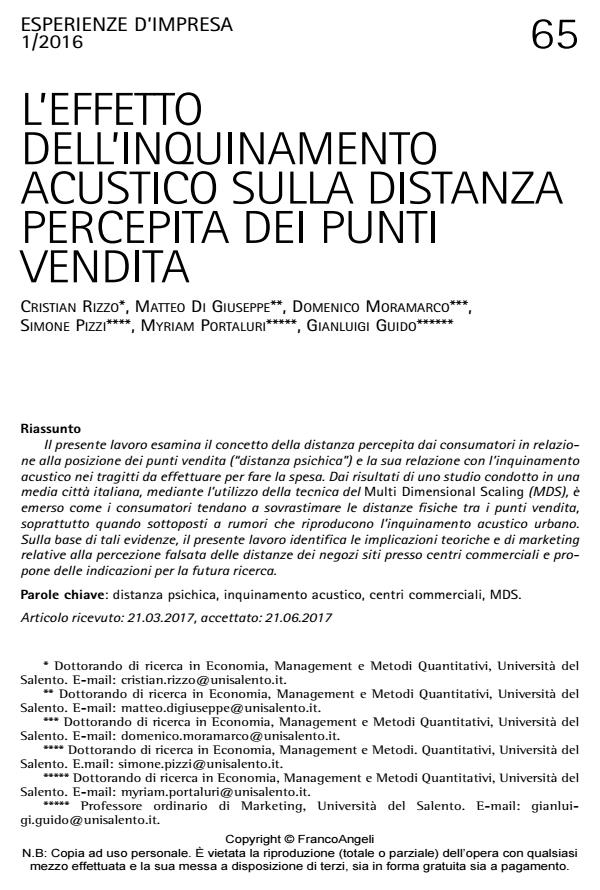How consumers perceive distances among retailers? Unveiling the role of noise Pollution
Journal title ESPERIENZE D'IMPRESA
Author/s Cristian Rizzo, Matteo Di Giuseppe, Domenico Moramarco, Simone Pizzi, Myriam Portaluri, Gianluigi Guido
Publishing Year 2018 Issue 2016/1
Language Italian Pages 15 P. 65-79 File size 171 KB
DOI 10.3280/EI2016-001004
DOI is like a bar code for intellectual property: to have more infomation
click here
Below, you can see the article first page
If you want to buy this article in PDF format, you can do it, following the instructions to buy download credits

FrancoAngeli is member of Publishers International Linking Association, Inc (PILA), a not-for-profit association which run the CrossRef service enabling links to and from online scholarly content.
This study aims at analyzing the relationship between noise pollution and consumers’ perceived distance (so-called "psychic distance"), in the spatial identification of different shopping malls. Methods and results: By applying the Multi-Dimensional Scaling (MDS) analysis, it compares real and psychic distances between malls and uses appropriate t-tests to study the effect of noise pollution on it. Conclusions: Results show that consumers tend to overestimate distances among shopping malls and that the presence of noise pollution determines a significant increase in their perceived distance.
Keywords: Psychic distance, noise pollution, shopping malls, MDS
Cristian Rizzo, Matteo Di Giuseppe, Domenico Moramarco, Simone Pizzi, Myriam Portaluri, Gianluigi Guido, L’effetto dell’inquinamento acustico sulla distanza percepita dei punti vendita in "ESPERIENZE D'IMPRESA" 1/2016, pp 65-79, DOI: 10.3280/EI2016-001004